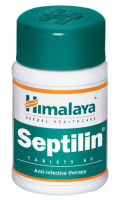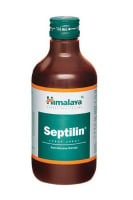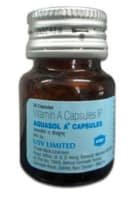NOTICE: unsafe with : Alcohol
USED FOR:
Tuberculosis (TB)
COMPOSITION:
Isoniazid (300mg)
Ethambutol (600mg)
Therapeutic Uses:
anti infectives

CAUTION
Combunex 300 mg/600 mg Tablet may cause symptoms such as flushing, increased heartbeat, nausea, thirst, chest pain and low blood pressure with alcohol (Disulfiram reactions).

WEIGH RISKS VS BENEFITS
Combunex 300 mg/600 mg Tablet may be unsafe to use during pregnancy.Animal studies have shown adverse effects on the foetus, however, there are limited human studies. The benefits from use in pregnant women may be acceptable despite the risk. Please consult your doctor.

SAFE
Combunex 300 mg/600 mg Tablet is safe to use during lactation. Human studies have shown that either the drug does not pass into the breastmilk in significant amount or is not expected to cause toxicity to the baby.

Do not drive unless you are feeling well.Combunex 300 mg/600 mg Tablet occasionally causes sight problems and tingling or numbness in hand or feet. After taking this medicine you should not drive until you know how it affects you.

CAUTION
Combunex 300 mg/600 mg Tablet should be used with caution in patients with kidney disease. Dose adjustment of Combunex 300 mg/600 mg Tablet may be needed. Please consult your doctor.Kidney function tests are advisable before the start of this medicine.

CAUTION
Combunex 300 mg/600 mg Tablet should be used with caution in patients with liver disease. Dose adjustment of Combunex 300 mg/600 mg Tablet may be needed. Please consult your doctor.
Uses of Isoniazid
Isoniazid is used in the treatment of tuberculosisIt is also used to treat inactive (latent) TB .
How to use Isoniazid
Take this medicine in the dose and duration as advised by your doctor. Swallow it as a whole. Do not chew, crush or break it. Combunex 300 mg/600 mg Tablet is to be taken with food.Avoid Combunex 300 mg/600 mg Tablet with tyramine-rich food such as cheese, smoked fish, meats and some types of beer.
How Combunex 300 mg/600 mg Tablet works
Isoniazid is an antibiotic. It works by killing the bacteria that causes tuberculosis.
Common Peripheral neuropathy (tingling and numbness of feet and hand), Increased liver enzymes, Hepatitis (viral infection of liver), Jaundice.
Expert advice for Isoniazid
Take it on an empty stomach (if it upsets your stomach, take it with food). Take it as and when prescribed (in case you skip a dose, do not take two doses at one time). In order to kill the TB bacteria and cure the disease completely, you will have to take this medicine for 6 to 12 months (your doctor will the precise duration for which you will take the medicine). You need to take vitamin B6 (Pyridoxine) along with Isoniazid. Vitamin B6 (Pyridoxine) will prevent possible numbness and tingling fingers and toes that may be caused by Isoniazid.
Q. Is Isoniazid an antibiotic?
Isoniazid is an antibiotic used in the prevention and treatment of tuberculosis or TB (a serious infection caused by bacteria that affects the lungs and in certain cases other parts of the body)
Q. Is Isoniazid chemotherapy/chemotherapy drug?
Isoniazid is a primary antibiotic used for treatment of tuberculosis. Do not confuse it with chemotherapy or chemo drugs used for the treatment of cancer
Q. Is Isoniazid bacteriostatic or bactericidal?
Isoniazid is a bacteriostatic antibiotic. It stops or suppresses growth of tuberculosis causing bacteria by interfering with the formation of protective outer covering (cell wall) which is essential for their growth
Q. Is Isoniazid safe?
Yes. Isoniazid is safe if used at prescribed doses for the prescribed duration as advised by your doctor
Q. Is Isoniazid a MAOI?
Isoniazid has very weak inhibitory activity on enzymes monoamine oxidases (MAO); however it is not used as a monoamine oxidase inhibitor (MAOI)
Q. Is Isoniazid a sulfa drug?
No. The chemical structure and mechanism of action of Isoniazid is different from sulfa drugs
Q. Is Isoniazid an inducer or inhibitor?
Isoniazid is an inhibitor (decreases activity) of an important liver enzyme system that is responsible for the final processing and elimination of several drugs from the body
Q. Can I take isoniazid with ibuprofen/Benadryl/Nyquil/Aleve/Mucinex/amoxicillin?
There no known serious drug interactions of isoniazid with ibuprofen, paracetamol (trade name: Tylenol), naproxen (trade name: Aleve), amoxicillin or any active drug present in Nyquil or Mucinex. Please inform your doctor about all the medication you are currently taking to avoid interactions that may reduce effectiveness of any treatment or aggravate side effects
Q. Does Isoniazid cause weight loss/weight gain/hair loss/diarrhea/affect menstruation?
Changes in body weight (gain/loss), hair loss, diarrhea or changes in menstruation are not among the known side effects of Isoniazid. You may experience few of these side effects while on multi drug (including Isoniazid) treatment for tuberculosis
Q. Does Isoniazid cause acne/make you tired/cause constipation?
You may experience unusual tiredness, constipation or acne while on treatment with Isoniazid. Please inform your doctor about all the medication you are currently taking to avoid interactions that may reduce effectiveness of any treatment or aggravate side effects
Q. Does Isoniazid affect birth control?
Isoniazid has no known interaction with commonly used oral contraceptives (birth control pills). However, multidrug treatment for tuberculosis contains active drug rifampin that decreases the effectiveness of oral contraceptives and hampers birth control.
Uses of Ethambutol
Ethambutol is used in the treatment of tuberculosis.
How to use Ethambutol
Take this medicine in the dose and duration as advised by your doctor. Swallow it as a whole. Do not chew, crush or break it. Combunex 300 mg/600 mg Tablet is to be taken with food.Avoid Combunex 300 mg/600 mg Tablet with tyramine-rich food such as cheese, smoked fish, meats and some types of beer.
How Combunex 300 mg/600 mg Tablet works
Ethambutol is an antibiotic. It works by slowing the growth of bacteria that causes tuberculosis.
Common Visual impairment, Color blindness.
Expert advice for Ethambutol
Do consult your doctor before taking ethambutol if you have any eye problems such as cataracts (disturbed vision due to clouding of eye lenses) , recurrent inflammatory conditions of the eye, optic neuritis (inflammation of nerve fibers that transmit visual information from your eye to the brain), and diabetic retinopathy (a complication of eye due to diabetes). Ethambutol can cause serious eye damage. Regular eye checkups are recommended while on treatment with ethambutol.
Do consult your doctor before taking ethambutol:
If you have kidney problems.
If you have liver problems.
If you have gout (pain, swelling, redness and stiffness in joints due to accumulation of uric acid).
Ethambutol is not recommended for use in children aged below 3 years.
Do consult your doctor before taking ethambutol if you are pregnant or planning to become pregnant.
Do consult your doctor before taking ethambutol if you are breastfeeding.
Do not stop taking ethambutol without consulting your doctor. If you forget to take a dose of ethambutol, take it as soon as you remember. Do not double the dose to make up for the missed dose.
Q. Does Ethambutol cause blindness?
Optic neuritis (inflammation of nerve fibers that transmit visual information from your eye to the brain) is one of the side effects of Ethambutol which causes several forms of eye defect. Although these conditions are reversible upon discontinuation of the drug, rare cases of irreversible blindness have also been reported. Please contact your doctor immediately if you notice any of these symptoms: decreased clearness of vision, loss of vision, disturbed vision due to blind spots, color blindness, visual field defect and eye pain
Q. Does Ethambutol induce hyperuricemia/how does Ethambutol induce hyperuricemia?
Yes. Increase in blood levels of uric acid is a side effect of Ethambutol. It increases the retention of uric acid in the body by decreasing the excretion of urates (uric acid) by the kidneys
Q. How does Ethambutol work in the body?
Ethambutol is an antibiotic effective against tuberculosis causing bacteria. It suppresses the growth of the bacteria by interfering with the formation of the outer protective covering (cell wall) of the bacteria, thereby weakening the bacteria
Q. What is Ethambutol toxicity/How does Ethambutol cause optic neuritis/how does Ethambutol affect vision?
Ethambutol toxicity involves toxic effects on the eyes (optic neuritis/optic neuropathy) which are related to the dose and duration of Ethambutol treatment. It causes optic neuritis (inflammation of nerve fibers in the eye) by interfering with important cellular activities (mitochondrial toxicity) in the nerve cells and inducing nerve damage (neuropathy) thereby affecting the transmission of visual information from the eye to brain. The symptoms of Ethambutol induced optic neuritis include: decreased clearness of vision, loss of vision, disturbed vision due to blind spots, color blindness, visual field defect and eye pain
Q. What does Ethambutol treat?
Ethambutol is an antibiotic effective against tuberculosis causing bacteria. It is used in the prevention, treatment and second time treatment of tuberculosis (a serious infection caused by bacteria that affects the lungs and in certain cases other parts of the body)
Q. Is Ethambutol bacteriostatic or bactericidal?
Ethambutol is both a bacteriostatic and a bactericidal antibiotic. It suppresses the growth of bacteria (bacteriostatic) by interfering with the formation of the outer protective covering (cell wall) of the bacteria, thereby weakening it and causing cell death in certain cases (bactericidal)
Q. Is Ethambutol hepatotoxic?
Liver toxicities are among the known side effects of Ethambutol. Inflammation of liver (hepatitis), abnormal liver function causing yellowing of skin and eyes (jaundice), abnormal liver function tests (blood tests to assess health of liver) and very rarely liver failure have been noted in patients receiving multi drug (including Ethambutol) treatment for tuberculosis. Please contact your doctor before taking Ethambutol if you have any liver problems
Q. Is Ethambutol toxicity reversible?
In most cases Ethambutol toxicities are related to dose (depends upon the quantity of Ethambutol you take) and duration of treatment and are reversible upon discontinuation. However, serious irreversible damage to eye and liver has been reported in rare cases
Q. Is Ethambutol chemotherapy?
Ethambutol is an antibiotic used in the treatment of tuberculosis. Do not confuse it with chemotherapy or chemo drugs used for the treatment of cancer
Q. Ethambutol is effective against?
Ethambutol is effective against most tuberculosis causing bacteria belonging to Mycobacterium family (M. tuberculosis, M. avium complex, M. kansasii, M. marinum).


 Combunex 300 mg/600 mg Tablet
Combunex 300 mg/600 mg Tablet  Bookmark
Bookmark




















